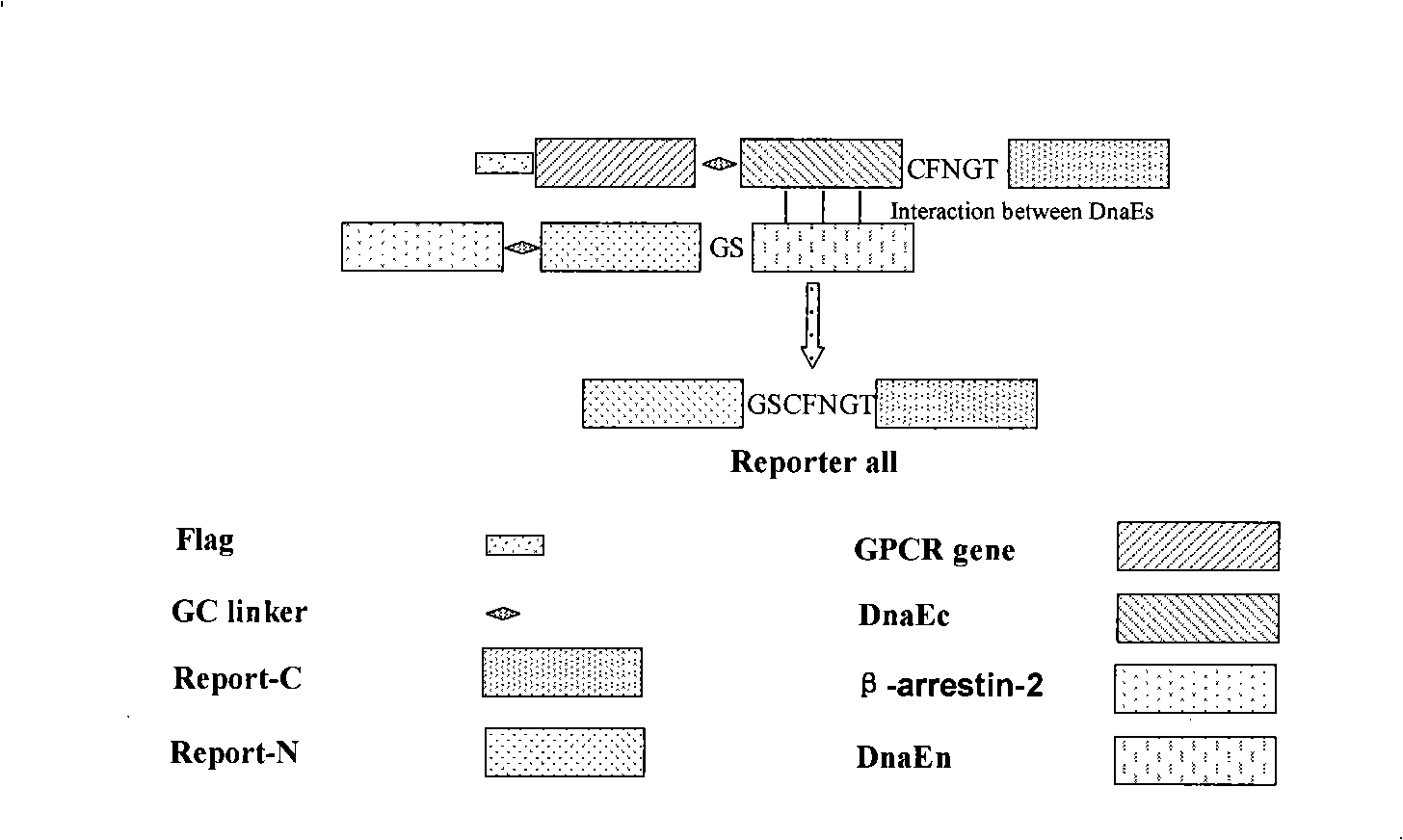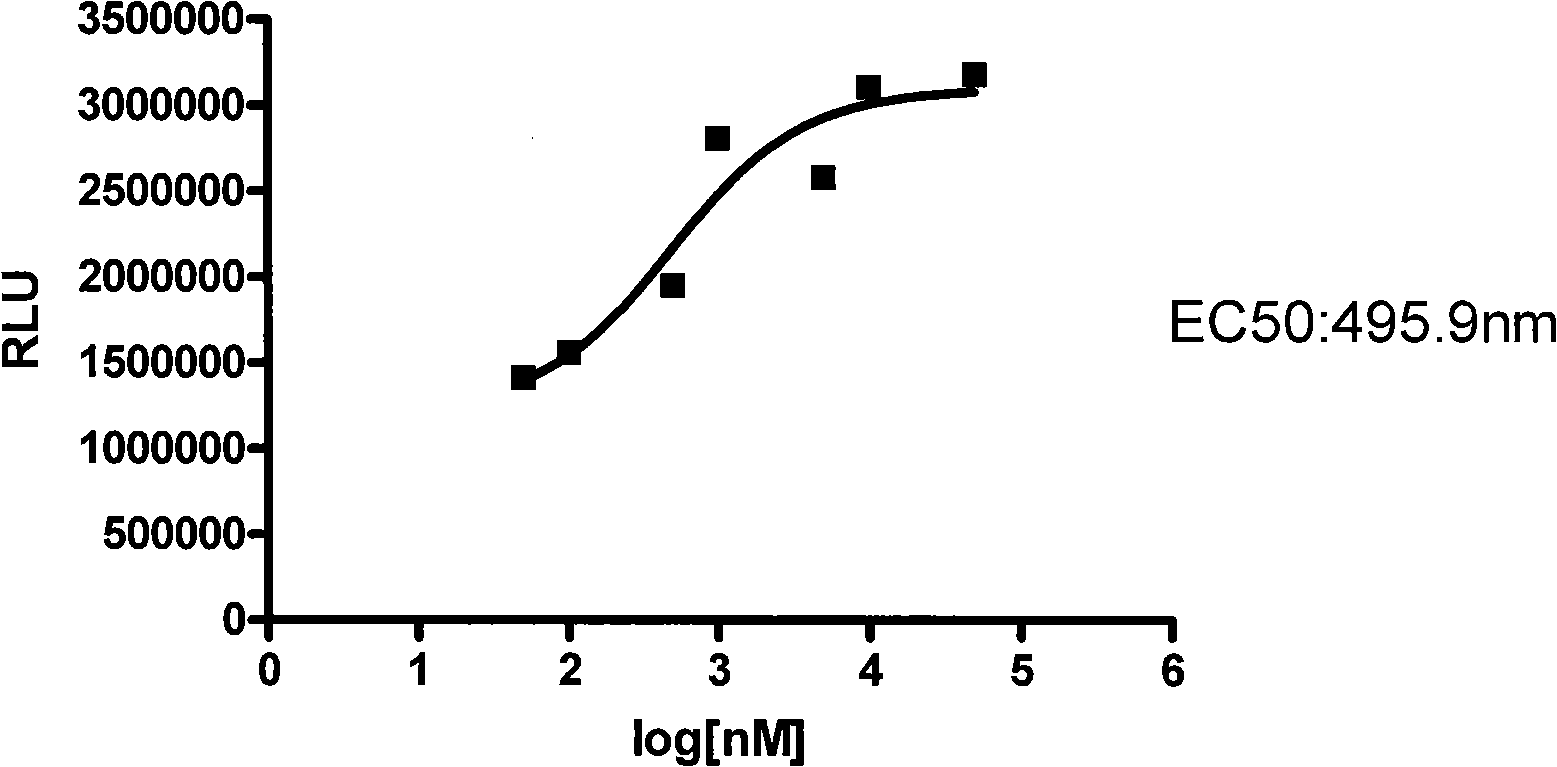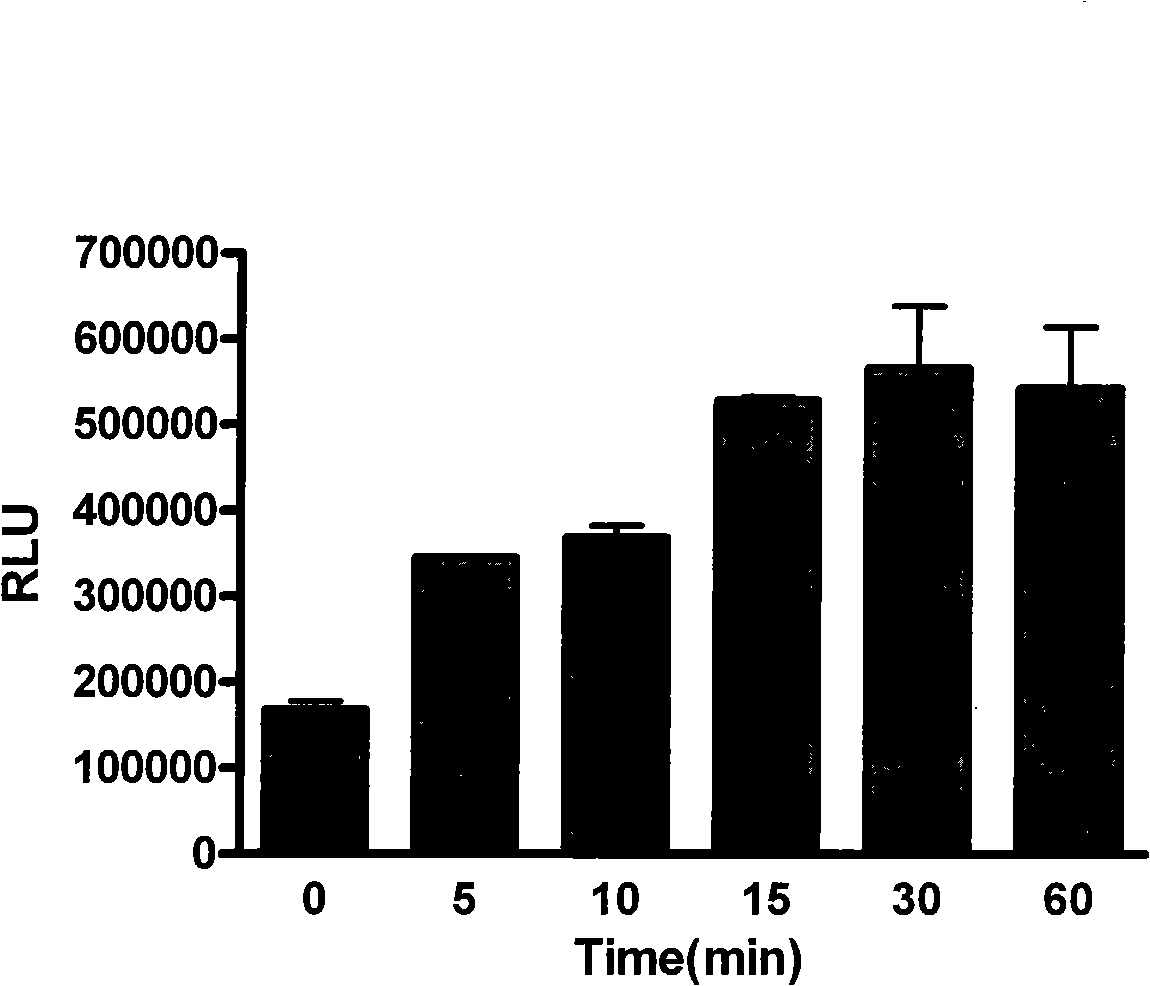Novel horizontal screening system construct by recipient cell G protein coupling and applications
A technology of coupled receptors at the cellular level, applied in the determination/inspection of cells and microorganisms modified by the introduction of foreign genetic material, and the introduction of foreign genetic material using vectors, etc., can solve the overall signal inactivation, hinder G protein binding, etc. question
- Summary
- Abstract
- Description
- Claims
- Application Information
AI Technical Summary
Problems solved by technology
Method used
Image
Examples
Embodiment 1
[0082] (1) Cloning the HM74a gene from human placenta genomic DNA, cloning the β-arrestin2 gene from HEK293 total RNA by RT-PCR, and cloning the N-terminus of the DnaE gene (DnaE-N ) and C-terminal (DnaE-C); construction of plasmid i: pCMV-flag-HM74a and plasmid ii: pCDNA-β-arrestin2.
[0083] (2) Anacystis nidulans R2DnaE-C (1-36aa) and two Renilla luciferase gene C-terminals (rLuc-C, 111-311aa) were spliced together by overlap PCR to splice DnaE-C and rLuc-C, and in DnaE 5 amino acid sequences of CFNGT were added between -C and rLuc-C, and a GC linker (whose amino acid sequence was GGGGSG) was connected to the N-terminal of DnaE-C; , 1-110aa) and Anacystis nidulans R2DnaE-N (37-152aa) were spliced together by overlapping PCR to rLuc-N and DnaE-N, and two amino acid sequences of GS were added between rLuc-N and DnaE-N, and rLuc- The N-terminal of N is also connected to a GC linker.
[0084] (3) Insert the above-mentioned constructed DnaE-C-rLuc-C and rLuc-N-DnaE-N into ...
Embodiment 2
[0091] (1) Cloning the HM74a gene from human placenta genomic DNA, cloning the β-arrestin2 gene from HEK293 total RNA by RT-PCR, and cloning the N-terminus of the DnaE gene (DnaE-N , 37-141aa) and C-terminal (DnaE-C, 1~36aa);
[0092] (2) Nostoc punctiforme DnaE-C (1-36aa) and two Renilla luciferase gene C-terminals (rLuc-C, 229-311aa) were spliced together by overlap PCR to splice DnaE-C and rLuc-C, and in DnaE 5 amino acid sequences of CFNGT were added between -C and rLuc-C, and a GC linker (whose amino acid sequence was GGGGSG) was connected to the N-terminal of DnaE-C; the N-terminals of two Renilla luciferase genes (rLuc-N , 1-229aa) and Nostoc punctiforme DnaE-N (37-141aa) were spliced together by overlapping PCR to rLuc-N and DnaE-N, and two amino acid sequences of GS were added between rLuc-N and DnaE-N, and rLuc- The N-terminal of N is also connected to a GC linker.
[0093] (3) Insert the above constructed DnaE-C-rLuc-C and rLuc-N-DnaE-N into plasmid i and plas...
Embodiment 3
[0096] Example 3: Detection of endocytic activity of human cannabinoid receptor CB1
[0097] According to the method of Example 1, the plasmid vectors pCMV-Flag-CB1-rLucN-DnaEN and pcDNA-βArrestin2-DnaEC-rLucC were constructed, and then pCMV-Flag-CB1-rLucN-DnaEN and pcDNA-βArrestin2- The DnaEC-rLucC expression vector was co-transfected into HEK293 cells, and the stable expression cell lines were obtained by G418 (800 μg / ml) selection for 2-3 weeks. Stable expressing cells were digested with trypsin-EDTA, transferred to 24-well culture plates, and incubated at 37°C for 12 to 16 hours in CO 2 Culture in an incubator, add serum-free DMEM medium containing 4 μM agonist WIN 55, 212-2 at 37°C in CO 2 Cultivate in the incubator for 4 to 6 hours, and then detect the luciferase activity with a chemiluminescence detector. The results are shown in Figure 4 .
PUM
 Login to View More
Login to View More Abstract
Description
Claims
Application Information
 Login to View More
Login to View More - R&D
- Intellectual Property
- Life Sciences
- Materials
- Tech Scout
- Unparalleled Data Quality
- Higher Quality Content
- 60% Fewer Hallucinations
Browse by: Latest US Patents, China's latest patents, Technical Efficacy Thesaurus, Application Domain, Technology Topic, Popular Technical Reports.
© 2025 PatSnap. All rights reserved.Legal|Privacy policy|Modern Slavery Act Transparency Statement|Sitemap|About US| Contact US: help@patsnap.com



